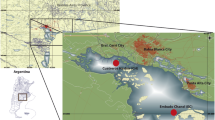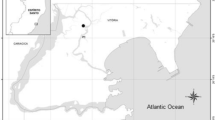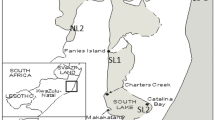Abstract.
Carassius auratus were exposed to mixtures of constant free lead (0.1 mg/L) and particulate lead (adsorbed on gibbsite particles) at varied concentrations (0, 0.4, 0.8, 1.2, 2.0, and 3.0 mg/L). The concentrations of lead and aluminum in the gills and intestines of the fish were determined after exposure. The gills were examined (after the exposure) with a light microscope for any particles adhering to the surface. The examination results revealed that lead accumulations on the gills increased with increased particulate lead concentrations in the ambient water (under conditions of a constant level of free lead), indicating the bioavailability of lead via the gills. Gibbsite particles were also observed on the gill surface after exposure. The ratio of lead and aluminum in the gills was much higher than that in the particles. Our results suggest that there was a two-step process involved in the uptake of particulate lead by fish gills: (1) adherence of the particles on the gill surface where mucus was attached; and (2) desorption of lead from the particles under conditions of the gill microenvironment.
Similar content being viewed by others
Author information
Authors and Affiliations
Additional information
Received: 4 January 1999/Accepted: 24 April 1999
Rights and permissions
About this article
Cite this article
Tao, S., Liu, C., Dawson, R. et al. Uptake of Particulate Lead via the Gills of Fish (Carassius auratus). Arch. Environ. Contam. Toxicol. 37, 352–357 (1999). https://doi.org/10.1007/s002449900524
Issue Date:
DOI: https://doi.org/10.1007/s002449900524




